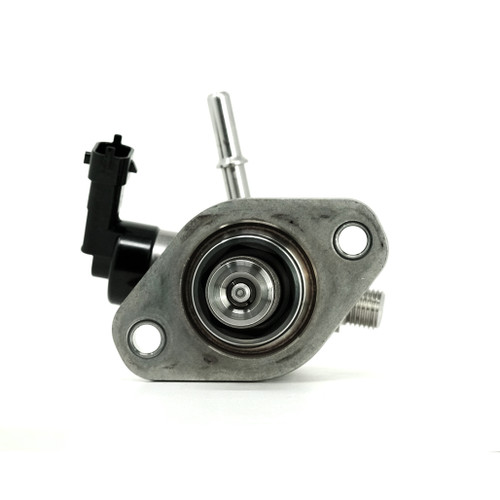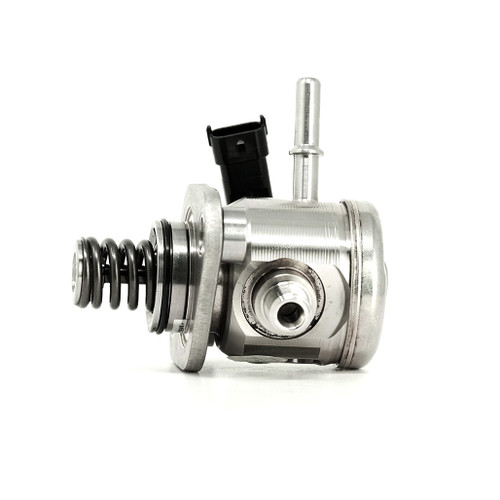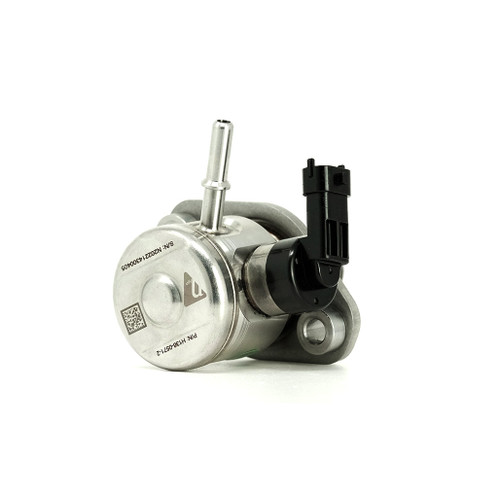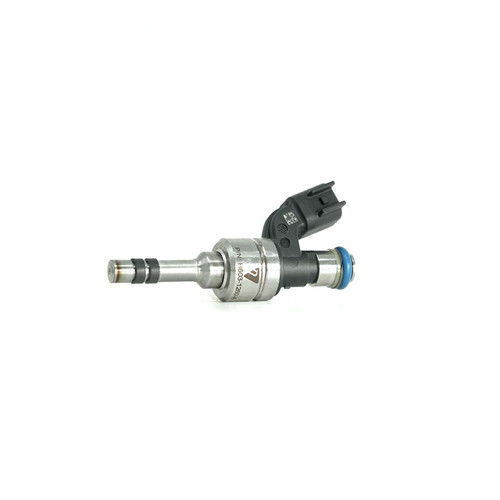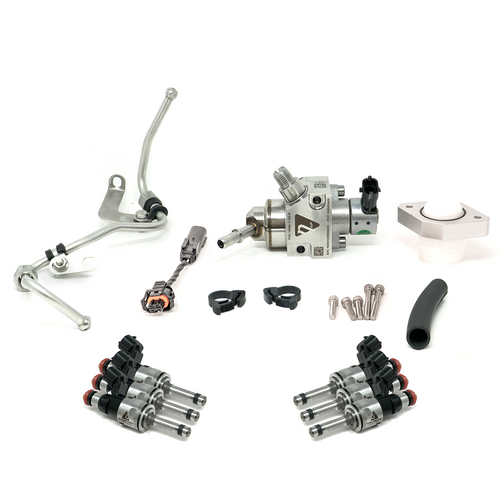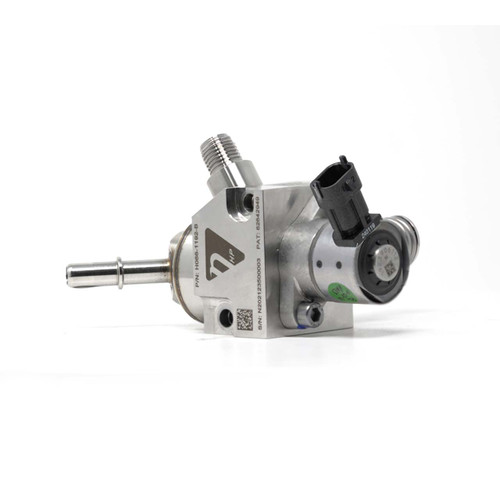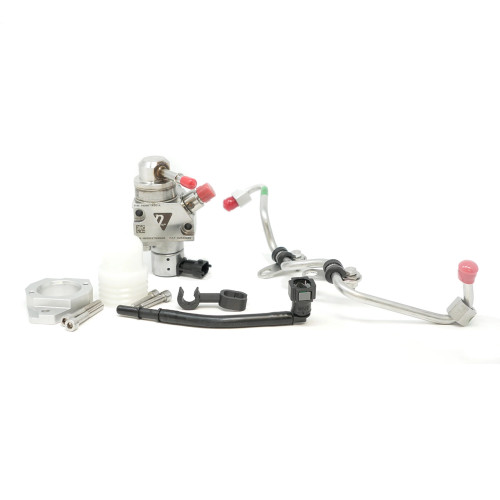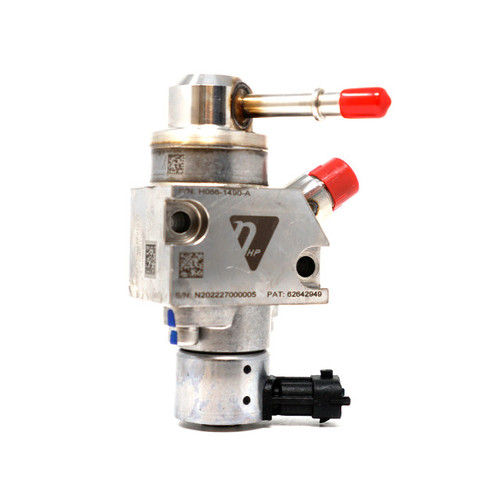What sets Nostrum apart:
- Fully assembled HPFP
- 100% Flow tested before sale
- +10% injector flow rate increase over stock
- The only DI injector upgrade on the market for FA20F that works with stock ECU!
- Set of 4 batched and serialized injectors with tuning data
- E85 compatible
- Direct Replacement - same outline as the OE injector
- OEM equivalent injector spray pattern
- OEM ECU controlled (COBB tuning recommended)
- Ethanol Compatible
- Limited Lifetime Warranty
- Installation guide included
WRX owners are always looking for more power but quickly run out of fuel when they start chasing additional gains.
Nostrum’s HPFP for the turbo FA20 is capable of flowing 40% more fuel than the factory fuel pump. The additional fuel flow allows you to dial in more boost earlier, resulting in a substantial increase in low end torque. Being that our pumps are ethanol compatible, you also have the added benefit of being able to run e85 or blended ethanol fuel. Ethanol is wonderful on turbo cars, as it has a higher octane rating and is less prone to knock than 91/93 pump gas, and you have the potential to make more power as a result. The HPFP can also be installed and driven on without a tune, but we recommend tuning to utilize the pump’s full potential. Our pumps are tunable on Cobb and ECUTek software.
While the additional torque from the upgraded HPFP is a wonderful thing, most people are looking for more peak horsepower. Pairing our Stage 1 injectors, which flow 10% more than stock, with the upgraded HPFP creates the ultimate DI Fueling package for this platform. There’s no need to worry about secondary injection controllers, filling meth tanks or clogged meth injectors. These are the only aftermarket injectors for this platform that are 100% compatible with the stock ECU and tunable on Cobb or ECUTek. Injector Data and Tuning guides are available upon request.
Nostrum backs every part we sell with a limited lifetime warranty. All Nostrum products come complete with everything you need inside the box, including detailed installation instructions. Tuning guides are also available for your dealer or tuner. We have customer service and calibration engineers on staff to provide you with any support that you may need, from installation to tuning.
- 2015-2021 Subaru WRX
- 2014-2018 Subaru Forester XT
Dyno graph sponsorship results:
Tims's WRX made an easy 370 WHP on pump E85 with a Nostrum Stage 1 fuel bundle and minor bolt ons! (intake, intercooler, low pressure fuel pump)


*Horsepower and Torque numbers are approximate and can vary significantly depending on numerous factors including what supporting upgrades are done to the vehicle, ambient temperature, elevation, road surface, tire selection & condition, fuel octane and quality, vehicle weight, and more. The advertised numbers herein are based on optimal conditions and utilizing proper supporting modifications. Your results may vary.
- 2015-2021 Subaru WRX
Recommended tuners:
- Clark Turner Tuning - Arizona
- BCP Tuning - Michigan
Frequently ask questions:
Q: Why don't I see horsepower gains with just a pump?
A: Fundamentally we have to look at the entire fueling system and "where" in the rpm range the limits are. DI fuel systems in stock trim are often pump limited at middle rpm (peak torque) and injector limited at high rpm (peak power). This is due to engine speed. HPFPs are mechanically driven pumps (driven by the camshaft pump lobe spinning at ½ crank speed) and are RPM (engine speed) dependent. Many of the quoted flow increases in the aftermarket are purely displacement based comparisons: where by example the big bore pump has a piston diameter X% larger than the "stock" pump or the swept displacement ((3.14*(radius)^2)*(stroke))of the pump Y% larger than the stock pump. The larger displacement of the pump really shines in low rpm, where the fuel injector has plenty of time (crank angle degrees) to inject fuel. As the engines starts to approach peak power the engine speed starts to become quite short and is limiting the injection duration (crank angle degrees) for the injection event (which is another reason why we like to increase fuel pressure up high!).
Q: Why do your numbers say I will make less horsepower on E85 than 93 octane?
A: Great question! The numbers we list in the product descriptions are similar to the numbers a turbo charger lists for air flow. The numbers are the "fuel system capacity to generate power" regardless of the other engine system limitations (air handling, mechanical limitations, knock propensity). Essentially the numbers are calculated assuming "sufficiently large air flow", "sufficiently capable mechanical assemblies" and disregarding knock limits. The equation uses actual observed engine volumetric efficiency (when available from sponsorship vehicles) and fuel capacity (including target pressures) to calculate power. Gasoline has more energy per mass volume than E85. So the higher fuel flow capacity will mathematically generate higher power potential for a gasoline than a high ethanol content fuel. The other variables (air flow, spark, rotating assembly strength, charge cooling, mechanical assembly strength) are highly variable from build to build. This is why we state horsepower capacity for the fuel system – representing the potential of the fuel system if you have all the other aspects of your build addressed!
Q: Why can't I run straight ethanol with your pump?
A: This is incorrect! We highly recommend running E85 from the pump on our products! Intermediate ethanol blends, like E30 to E50, are problematic (with any fuel system, stock and aftermarket). What happens is that Ethanol is a polar liquid, and all petroleum distillates are nonpolar; this means most things that can dissolve in Gasoline, are not soluble on Alcohol, and vice versa. Fuel manufacturers know this and choose their additive packages accordingly. Problems arise when you take E85 and then blend it down to ~E30 - E50. At these concentrations some of the gasoline additives will come out of solution, and they form a slimy, sticky residue that clogs everything up. It seems to be regional and seasonal in nature, which makes sense when you consider that E85 blends vary with the seasons. Running straight gasoline through the fuel system seems to fix it. If you choose to run intermediate blends then we do recommend that you run straight 93 gasoline from time to time to as a fuel system maintenance practice. That being said, we absolutely highly recommend pulling up to the pump and going full Pump E85 (P-E85)!!!!






